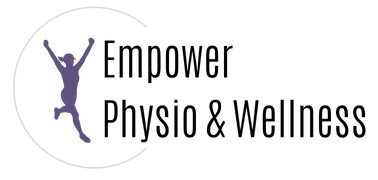You know that feeling when you bend down to pick up groceries and then…ouch! Your low back feels that twinge of pain? Yeah, me too…and it’s the worst! One of my main goals as a physical therapist is to set my clients up for success not only as athletes but in everyday life too. That’s why it’s important to incorporate functional exercises into your regular workout routine. So what’s the best exercise for lower back pain management or lower body injuries?
Drumroll please…it’s the deadlift! There are tons of reasons why I love the deadlift. First off, it correlates to movements that you do in everyday life. Deadlifts help improve your ability to do things like lift kids, carry heavy boxes and bags, garden, clean bathtubs, carry cases of water from Costco, and more–the list is endless.
It’s also a great comprehensive strengthener of your posterior chain muscles. This is a fancy way to refer to the muscles on the back of your body, particularly the glutes and hamstrings. These muscles tend to be weak or undertrained in a lot of people and deadlifts are a great way to strengthen them.
How to perform a deadlift
While it’s a relatively simple exercise, I think a lot of people can be intimidated by the deadlift. That’s because they either don’t know how to perform it or have heard horror stories about people blowing out their backs doing a deadlift. The good news is that there’s really nothing to be afraid of and it’s a fantastic move when done properly.
I recommend starting without holding any weights so you can get comfortable with how to perform a deadlift. Once you master that, then go ahead and add in weight. It’s also helpful to stand in front of a mirror so you can see what you’re doing. You may try taking a yardstick or other long, skinny object and holding it along your spine. This will help you feel where movement is coming from.
- Stand with your feet a little wider than hip-width apart.
- Hinge forward from your hips, keeping only a soft bend in the knees and maintaining a straight spine. Your chest will point towards the ground, but keep looking forward with your head so you don’t hunch forward. As you hinge, think about pointing your tailbone up to the ceiling to engage your hamstrings.
- Return to standing by engaging your glutes and hamstrings to pull you up. Stop once you’re standing upright–don’t lean backward or over-arch your back.
If you’re more of a visual learner, here’s a video where I walk you through the deadlift.
Common deadlift downfalls
Two of the most common mistakes I see people make when performing a deadlift are:
1. Rounding or over-arching through the back. The vast majority of movement should come from hinging the hips, not over-bending or arching the back.
2. Overusing the low back muscles to return to standing. Yes, deadlifts do strengthen your back muscles, however, the real power comes from your glutes and hamstrings. They have a much better mechanical advantage to complete the movement. If your back feels sore, overly tired, or painful while doing deadlifts, then you are probably relying too much on your back muscles.
So how do you incorporate this move into your routine? If you’re not regularly exercising or doing deadlifts, it’s super easy to add them to your routine. Start with 2 sets of 10-15 deadlifts. If you’re ready to add weights, grab a bottle of laundry detergent, a bag of flour, or wine bottles and hold those as you deadlift! Do these 3 – 4 days a week and I’ll bet you start feeling a difference in your strength. If you already practice deadlifts as a part of your regimen, bring awareness to how you’re moving to ensure you’re getting the max benefit of this move.
And there you have it–the best move for lower back pain. If you’re looking for tailored guidance on how to perform optimally in life, contact me and we can create a customized training program for you! Happy deadlifting!



